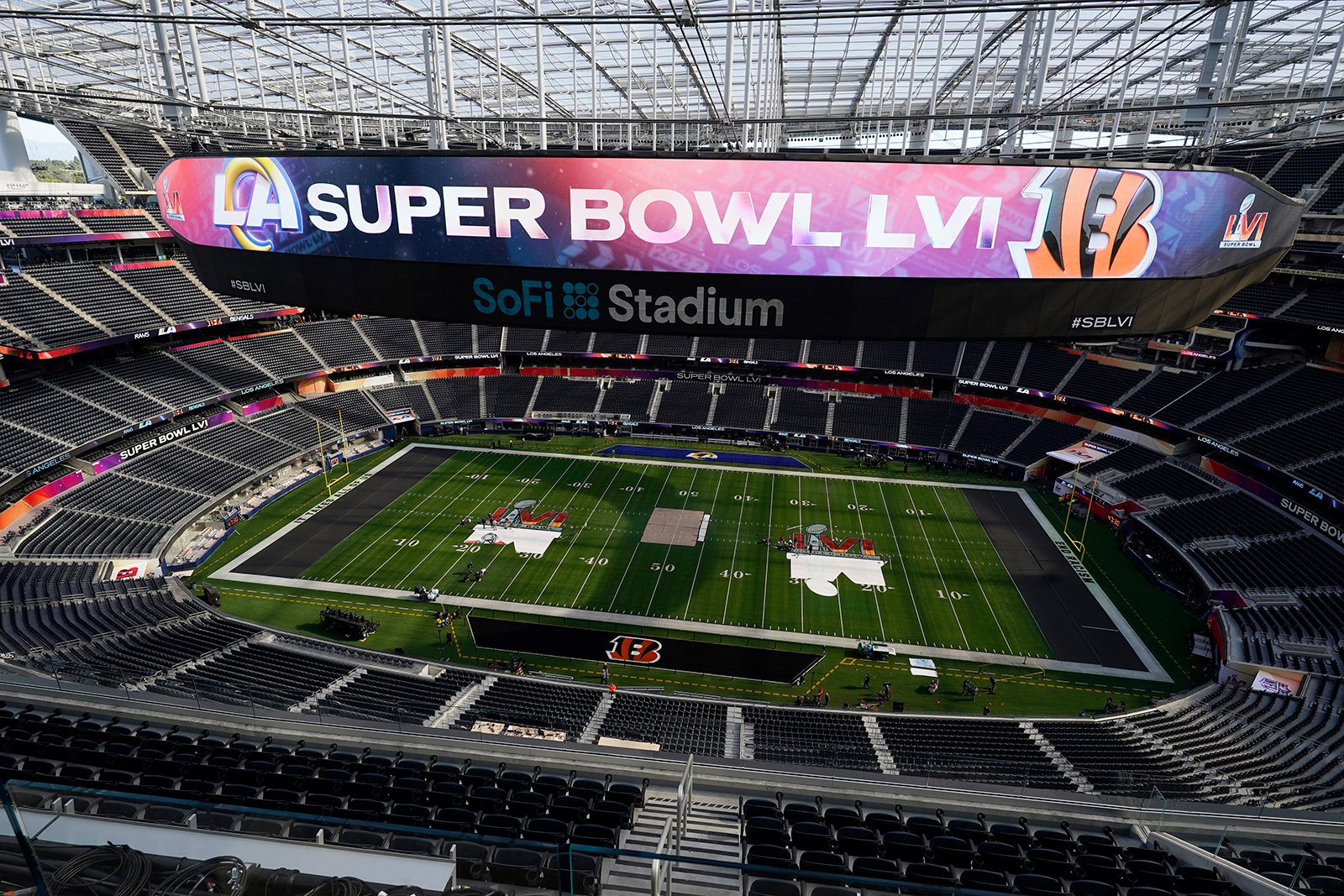
At Super Bowl LVI on Sunday, both teams will be playing with more than 1,000 tons hanging over their heads.
Suspended 122 feet above the field, the 120-yard long, oval-shaped Infinity Screen by Samsung is the largest videoboard in the history of sports, according to the Korean electronics giant. But while it’s been in place since mid-2020, it won’t have had a showcase quite like the Super Bowl before.
The screen is a key feature inside SoFi Stadium in Inglewood, California, a massive, reportedly $5 billion facility shared by two NFL teams — one of which happens to be playing in this weekend’s big game.
When the Los Angeles Rams and the Cincinnati Bengals clash on Sunday, fans inside the 70,000-capacity arena will have access to all manner of game data as a result of the giant screen. Instant replays and close-ups, statistics, scores and interactive updates will all be programmed on the screen in panels ranging from 20 to 40 feet high.
With 70,000 square feet of ultra-high-definition screen totaling 80 million pixels on its inside and outside surfaces, fans sitting lower down watch the screen inside the oval, while fans higher up will see the outside. Basically, there are no bad angles.
The display is making a lot of noise — literally. It’s fitted with the equivalent of 1,500 home theater speaker systems, meaning there’s no chance of missing a referee’s call.
Though SoFi stadium hosted its first game in September 2020, Covid protocols meant fans weren’t allowed inside until the following April. The Super Bowl represents something of a Hollywood premiere after a season of previews.
The stadium was designed by HKS, and Samsung worked with architectural drawings to optimize the spectator experience, says Mark Quiroz, vice president of marketing for Samsung Display Division. “The pure complexity of the building, from concept to design to construction was a challenging feat,” he told CNN.
“Timing was also a very real challenge, ensuring that the Infinity Screen was ready for the NFL season opening day, a day that cannot be moved,” he added. “This was also coupled with the early days of the pandemic, and the ability to put proper health protocols in place to protect the workers.”
The need to innovate was paramount, however.
Some sports fans argue — in many cases rightly — that they can see more of the game and receive more in-game analysis from the comfort of their homes, and teams are having to work harder than ever on their stadium experiences.
“There is always going to be competition, as the home viewing experience has become so good with larger and sharper screens, requiring venues and technology providers (to) raise the bar on what the live fan experience needs to become to continually attract fans and guests,” Quiroz said.





More News
Opinion | Loneliness Is a Problem That A.I. Won’t Solve
At Chaotic Rally in Brooklyn, Police Violently Confront Protesters
Are Those Mimes Spying on Us? In Pakistan, It’s Not a Strange Question.